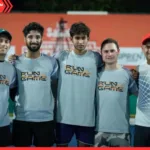Indian football is once again at a crossroads, with I-League clubs including Shillong Lajong FC demanding a unified “one-partner model” for all national leagues. The proposal, raised during a recent meeting of stakeholders, seeks to streamline sponsorship, broadcasting, and commercial rights under a single partner across the I-League, Indian Super League (ISL), and other national competitions.
This demand comes amid growing concerns that fragmented partnerships and inconsistent commercial structures are hampering the growth of Indian football, particularly for clubs outside the ISL ecosystem. By advocating for a one-partner model, I-League clubs hope to ensure equitable distribution of resources, visibility, and opportunities.
Why I-League Clubs Are Demanding Change
The I-League, once India’s premier football competition, has struggled to maintain parity with the ISL in terms of sponsorship, broadcasting reach, and financial support. Clubs argue that the current system creates a two-tier structure, leaving I-League teams disadvantaged despite their contribution to grassroots football and talent development.
Key concerns raised by clubs include:
- Unequal Sponsorship Deals: ISL enjoys centralized sponsorships, while I-League clubs negotiate independently.
- Broadcasting Gaps: Limited television coverage for I-League matches compared to ISL.
- Revenue Disparity: Clubs outside ISL receive minimal commercial benefits.
- Talent Recognition: Players from I-League often overlooked despite strong performances.
Shillong Lajong FC’s Role in the Movement
Shillong Lajong FC, one of the most prominent clubs from the North-East, has been vocal in demanding reforms. The club emphasized that the North-East region has produced some of India’s finest footballers, yet its clubs remain financially strained due to unequal commercial structures.
The club’s leadership highlighted that a unified model would not only benefit I-League teams but also strengthen Indian football’s overall ecosystem by ensuring fair representation and visibility.
Proposed One-Partner Model: How It Works
Under the one-partner model, a single commercial partner would manage sponsorship, broadcasting, and marketing rights for all national leagues. This would create a centralized pool of revenue, distributed fairly among clubs across ISL, I-League, and other competitions.
| Feature | Current System | Proposed One-Partner Model |
|---|---|---|
| Sponsorship | Fragmented, league-specific | Unified across all leagues |
| Broadcasting | ISL dominates TV coverage | Equal coverage for I-League & ISL |
| Revenue Distribution | Unequal, ISL-centric | Centralized pool, fair allocation |
| Talent Visibility | ISL players prioritized | Equal recognition for all leagues |
Benefits of the Unified Model
- Financial Stability: Ensures smaller clubs receive consistent revenue.
- Broadcast Equality: Wider coverage for I-League matches.
- Talent Development: Greater visibility for players across leagues.
- National Growth: Strengthens grassroots football and regional representation.
- Commercial Efficiency: Simplifies sponsorship negotiations and maximizes brand value.
Challenges Ahead
While the proposal has gained traction among I-League clubs, challenges remain:
- Resistance from ISL Stakeholders: ISL franchises may oppose revenue sharing.
- Contractual Obligations: Existing sponsorship and broadcasting deals could complicate transition.
- Implementation Logistics: Managing centralized rights across multiple leagues requires robust governance.
Comparative Global Models
Several countries have adopted unified commercial structures for their football leagues, ensuring equitable growth.
| Country | Model | Outcome |
|---|---|---|
| England | Premier League centralized rights | Massive global reach, equal revenue sharing |
| Germany | Bundesliga collective deals | Strong financial health across clubs |
| Japan | J-League unified sponsorship | Balanced growth, grassroots development |
Indian football stakeholders believe adopting a similar model could help bridge the gap between ISL and I-League.
Conclusion
The demand by I-League clubs, led by Shillong Lajong FC, for a one-partner model represents a pivotal moment in Indian football. If implemented, the model could unify the commercial landscape, ensure fair treatment of clubs across leagues, and strengthen the sport’s national footprint.
As discussions continue, the future of Indian football may hinge on whether stakeholders embrace this call for unity or maintain the current fragmented system.
Disclaimer: This article is based on publicly available discussions and stakeholder statements. Readers are advised to follow official All India Football Federation (AIFF) updates for verified information.











